What can a pap smear tell. Understanding the Benefits and Limitations of Pap Smears: A Comprehensive Guide
What can a pap smear tell? Discover the science behind this important screening test and what it can and cannot detect. Get expert insights on cervical cancer screening guidelines and recommendations.
The Science Behind the Pap Test
A Pap test, also known as a Papanicolaou test or Pap smear, is a routine screening procedure that collects cells from the cervix (the lower part of the uterus) to check for abnormalities. This test is designed to detect precancerous changes in the cells that could potentially lead to cervical cancer if left untreated.
During a Pap test, a healthcare provider uses a small brush or spatula to gently collect a sample of cells from the surface of the cervix. These cells are then preserved in a special liquid and sent to a laboratory for analysis under a microscope. The test can reveal the presence of any atypical or abnormal cells, which may indicate the following:
- Mild inflammation
- Infection with the human papillomavirus (HPV)
- Precancerous changes, known as cervical intraepithelial neoplasia (CIN)
- Cervical cancer
Understanding Pap Test Results
The results of a Pap test are typically classified into one of several categories:
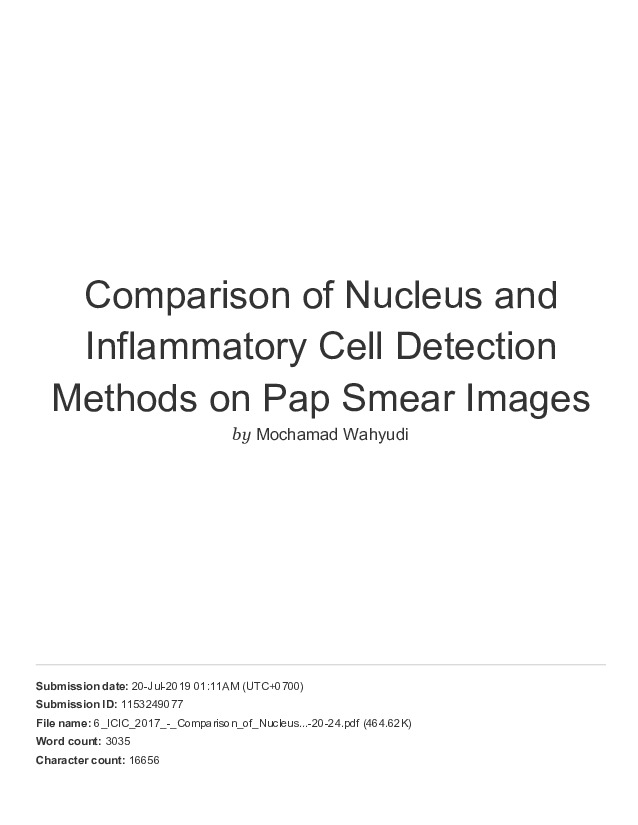
- Normal (negative): The cells appear normal, and there are no signs of precancerous changes or cancer.
- Atypical squamous cells of undetermined significance (ASC-US): The cells show some abnormalities, but it’s unclear if they are precancerous. Further testing or monitoring may be recommended.
- Low-grade squamous intraepithelial lesion (LSIL): The cells show mild abnormalities, which are often caused by a temporary HPV infection and may resolve on their own.
- High-grade squamous intraepithelial lesion (HSIL): The cells show more significant abnormalities, which may indicate a higher risk of developing cervical cancer if not properly treated.
- Atypical glandular cells (AGC): The cells show abnormalities in the glandular cells, which can be a sign of a more serious condition, such as cervical or uterine cancer.
What Can and Cannot Be Detected by a Pap Test
While the Pap test is an important tool for detecting precancerous changes and cervical cancer, it has its limitations. The test is primarily designed to detect abnormalities in the cells of the cervix, but it cannot detect other types of gynecologic cancers, such as ovarian cancer.

Additionally, the Pap test is not a comprehensive screening tool for sexually transmitted infections (STIs). If you are concerned about potentially having an STI, you should discuss with your healthcare provider about the appropriate screening tests to request.
Cervical Cancer Screening Guidelines
The recommendations for cervical cancer screening with a Pap test vary slightly among different medical organizations, but generally, the following guidelines apply:
- Start screening at age 21, with Pap tests every 3 years until age 30.
- From ages 30 to 65, screening can be done with either a Pap test every 3 years or a combination of a Pap test and HPV test every 5 years.
- After age 65, screening may not be necessary if you have had adequate prior screening with normal results and are not at high risk for cervical cancer.
It’s important to discuss your individual risk factors and screening recommendations with your healthcare provider, as they may adjust the guidelines based on your personal medical history and needs.

When to Seek Medical Attention
If you experience any concerning symptoms, such as abnormal vaginal discharge, bleeding, or pain, it’s important to schedule an appointment with your healthcare provider, even if you are up-to-date with your routine Pap test screening.
Your provider can examine you, discuss your symptoms, and determine if additional testing or follow-up is recommended. Don’t hesitate to reach out if you have any questions or concerns about your gynecological health.
The Importance of Regular Pap Tests
Regular Pap tests are a crucial part of preventive healthcare for people with a cervix. By detecting precancerous changes or early-stage cervical cancer, Pap tests can allow for prompt treatment and significantly improve the chances of successful outcomes.
While the Pap test has limitations, it remains a valuable screening tool when used as part of a comprehensive approach to women’s health. By understanding the science behind the test and the recommended screening guidelines, you can take an active role in your cervical health and work with your healthcare provider to ensure the best possible outcomes.

What Does a Pap Test Detect?
Updated November 2022
Its real name: Papanicolaou test. There’s a good chance you know it as a Pap smear, or more appropriately, a Pap test. Discover the science behind this test — including what it doesn’t detect.
The Science Behind the Test
A Pap test is when a clinician takes a sample of cells from your cervix (the lower part of the uterus neck located at the top of the vagina). Then, they put the cells into small jar with a special liquid to preserve the sample so it can be tested for abnormalities under a microscope.
There are many reasons why you may have abnormal findings, such as:
- Mild inflammation
- Human papillomavirus (HPV)
- Cancer or precancer
Cervical cancer, if caught early, is highly treatable.
— Melissa A. Simon, MD
“The Pap test can detect changes in cells that could be concerning for possible cervical cancer or precancerous changes,” says Melissa A. Simon, MD, an obstetrician and gynecologist at Northwestern Medicine.
Simon, MD, an obstetrician and gynecologist at Northwestern Medicine.
Abnormal test results will indicate a number of atypical squamous cells, which will then be classified as low-grade or high-grade squamous intraepithelial lesions (LSIL and HSIL, respectively). LSIL indicates that the changes are mildly abnormal and usually caused by HPV infection, and they may go away on their own. HSIL suggests more serious changes.
“Cells that are determined to be atypical of undetermined significance basically reveal slightly abnormal cells, and it does not clearly mean precancer is there. Usually, these test results indicate to follow up in a year,” says Dr. Simon.
Abnormal Pap test results are typically caused by HPV. HPV is a sexually transmitted infection (STI) that enters cells and changes them. HPV can be prevented by getting the vaccine, which targets the HPV types that most commonly cause certain types of cancer and genital warts. Certain high-risk types of HPV are associated with an increased risk for the following types of cancer:
- Cervical
- Vulva
- Vagina
- Penis
- Anus
- Mouth and throat cancer
Depending on your Pap test results, your physician will determine the appropriate next steps. This can include another test, known as a colposcopy, which uses a special camera to look at your cervix. During this procedure, a biopsy of cells on your cervix may be taken for further analysis. Your physician may also opt for a loop electrosurgical excision procedure, known as LEEP, if there are more concerning findings or repeated abnormal Pap test results. A LEEP removes part of your cervix tissue for diagnosis and/or treatment.
This can include another test, known as a colposcopy, which uses a special camera to look at your cervix. During this procedure, a biopsy of cells on your cervix may be taken for further analysis. Your physician may also opt for a loop electrosurgical excision procedure, known as LEEP, if there are more concerning findings or repeated abnormal Pap test results. A LEEP removes part of your cervix tissue for diagnosis and/or treatment.
What It Can’t Determine
Although Pap tests can help detect precancerous cells on the cervix, there are other types of gynecologic cancers that Pap tests cannot detect.
Because your ovaries are far away from your cervix, it is extremely unlikely that a Pap test will detect ovarian cancer. For that to happen, the cancer cells would have to travel away from your ovaries, through your fallopian tubes and uterus, and into the area surrounding your cervix.
The Pap test is also limited in detecting other types of STIs. If you are concerned you may have a STI, you should ask your clinician to screen for specific STIs.
Pap Tests Are Part of Routine Screening
The U.S. Preventive Services Task Force (USPSTF) and the American College of Obstetricians and Gynecologists (ACOG) both suggest starting screening at age 21. However, the American Cancer Society suggests that cervical cancer screening begin at age 25.
Dr. Simon explains that there are many nuances and complexities of when to start screening and how frequently screening should be done. Cervical cancer can also take a long time to develop, which could explain the varying guidelines.
Screening with a Pap test every three years during this time period is acceptable. However, other types of screening include primary HPV testing every five years. If primary HPV testing is not available, screening may be performed with co-testing that combines an HPV test with a Pap test every five years.
“If you have vaginal discharge, abnormal bleeding or are feeling pain, schedule a visit with your healthcare clinician to discuss these symptoms,” says Dr. Simon. “It’s important that if you are ever in any doubt of what you are feeling or experiencing, and are questioning if you need screening or a test, always reach out to your care team so you can have that conversation.”
Simon. “It’s important that if you are ever in any doubt of what you are feeling or experiencing, and are questioning if you need screening or a test, always reach out to your care team so you can have that conversation.”
The USPSTF, ACOG and American Cancer Society agree that people older than 65 do not need to be screened if adequate prior screening has been completed with normal results and if there is no history or high risk of cervical cancer. Dr. Simon recommends talking to your primary care clinician about your individual risks and recommendations for screening.
Bottom Line
The Pap test is a screening tool that can help detect abnormal cells on your cervix. This early detection can be important in stopping precancerous cells from progressing to cervical cancer.
“Cervical cancer, if caught early, is highly treatable. And that’s why engaging in routine screening is very important,” says Dr. Simon. “Between the HPV vaccine and routine testing, this type of cancer really should be nonexistent. ”
”
What Should I Know About Cervical Cancer Screening?
Español (Spanish) | Print
“If I didn’t go to that appointment, I might not be around for my kids,” says Cindy. Her cervical cancer screening test found precancerous cells. She shares her story in this video.
The HPV test and the Pap test can help prevent cervical cancer or find it early.
- The HPV test looks for the virus (human papillomavirus) that can cause cell changes on the cervix.
- The Pap test (or Pap smear) looks for precancers, cell changes on the cervix that might become cervical cancer if they are not treated appropriately.
Both tests can be done in a doctor’s office or clinic. During the Pap test, the doctor will use a plastic or metal instrument, called a speculum, to look inside your vagina. This helps the doctor examine the vagina and the cervix, and collect a few cells and mucus from the cervix and the area around it. The cells are sent to a laboratory.
- If you are getting a Pap test, the cells will be checked to see if they look normal.
- If you are getting an HPV test, the cells will be tested for HPV.
What is cervical precancer? When there are cervical cells that look abnormal but are not yet cancerous, it is called cervical precancer. These abnormal cells may be the first sign of cancer that develops years later. Cervical precancer usually doesn’t cause pain or other symptoms. It is found with a pelvic exam or a Pap test.
If you have a low income or do not have health insurance, you may be able to get a free or low-cost screening test through the National Breast and Cervical Cancer Early Detection Program.
Find out if you qualify
When to Get Screened
If You Are 21 to 29 Years Old
You should start getting Pap tests at age 21. If your Pap test result is normal, your doctor may tell you that you can wait three years until your next Pap test.
If You Are 30 to 65 Years Old
Talk to your doctor about which testing option is right for you—
- An HPV test only.
 This is called primary HPV testing. If your result is normal, your doctor may tell you that you can wait five years until your next screening test.
This is called primary HPV testing. If your result is normal, your doctor may tell you that you can wait five years until your next screening test. - An HPV test along with the Pap test. This is called co-testing. If both of your results are normal, your doctor may tell you that you can wait five years until your next screening test.
- A Pap test only. If your result is normal, your doctor may tell you that you can wait three years until your next Pap test.
If You Are Older Than 65
Your doctor may tell you that you don’t need to be screened anymore if—
- You have had normal screening test results for several years, and
- You have not had a cervical precancer in the past, or
- You have had your cervix removed as part of a total hysterectomy for non-cancerous conditions, like fibroids.
No special preparation is needed before you have an HPV test.
If you are getting a Pap test, you can take steps to make sure the test results are accurate. Avoid intercourse, douching, and using vaginal medicines or spermicidal foam for 2 days before the test. If you had sex before the test, go to the appointment as planned and let the doctor know.
Avoid intercourse, douching, and using vaginal medicines or spermicidal foam for 2 days before the test. If you had sex before the test, go to the appointment as planned and let the doctor know.
If you have your period, don’t worry. Both tests can still be done at this time.
Test Results
It can take as long as three weeks to receive your test results. If your test shows that something might not be normal, your doctor will contact you and figure out how best to follow up. There are many reasons why test results might not be normal. It usually does not mean you have cancer.
If your test results show cells that are not normal and may become cancer, your doctor will let you know if you need to be treated. In most cases, treatment prevents cervical cancer from developing. It is important to follow up with your doctor right away to learn more about your test results and receive any treatment that may be needed.
If your test results are normal, your chance of getting cervical cancer in the next few years is very low.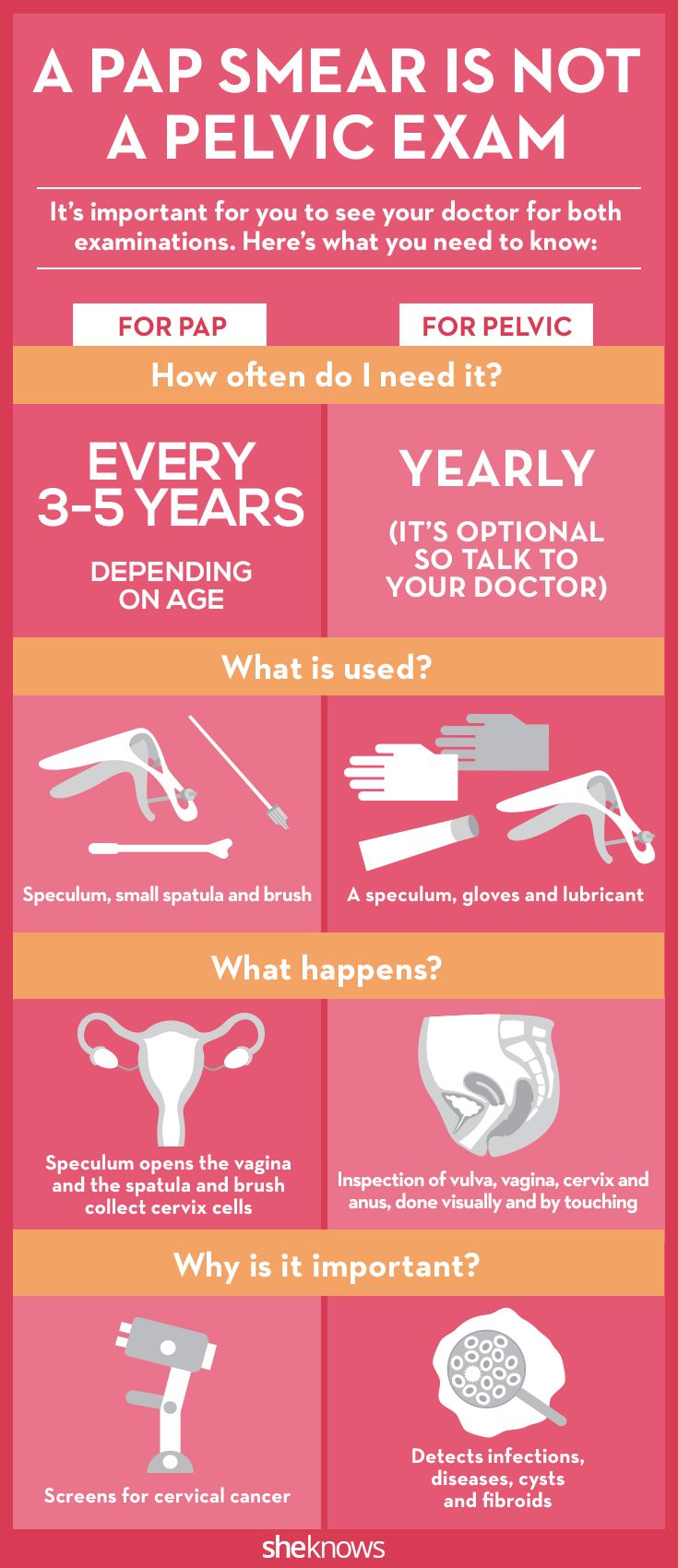 Your doctor may tell you that you can wait several years for your next cervical cancer screening test. But you should still go to the doctor regularly for a checkup.
Your doctor may tell you that you can wait several years for your next cervical cancer screening test. But you should still go to the doctor regularly for a checkup.
Smear analysis for flora in women and men, hurry up to take it at competitive prices in Moscow.
Lazarenko A. A.
Many thanks to the doctors Belikova O.S., Simonova E.B., Zhukov E.V. for patience and conscientious attitude towards the patient.
Oct 10 2018
Ermakova Julia
Good afternoon. Nowadays it is very difficult to find doctors who are real, those doctors who help people for real. Here is Ekaterina Borisovna, a doctor from God. She is always attentive, highly professional and caring with patients. I highly recommend her, she is one of the best specialists in this clinic. My children and I have been your patients for more than 10 years and I really hope that such specialists as Ekaterina Borisovna will always be with us.
Jun 28 2020
Elena
Excellent specialist. Everything is carefully analyzed. She finds the right solution and her treatment really helps. Now not only I go to Ekaterina Borisovna, but also all my family members and friends. Thank you!
Everything is carefully analyzed. She finds the right solution and her treatment really helps. Now not only I go to Ekaterina Borisovna, but also all my family members and friends. Thank you!
18 Apr. 2020
Malysheva A.T.
I would like to express my sincere gratitude to Ekaterina Borisovna Simonova. She is not only an attentive therapist, but also an excellent psychologist, she can bring you to feelings even when you want to howl like a wolf. Thank you for being such wonderful doctors.
Feb 18 2018
Irina
Thank you Simonova Ekaterina Borisovna!!!! Doctor from God! After an endocrinologist prescribed evening primrose oil to me for 6 months, my liver and gallbladder “did not agree” with such treatment. As always, she rushed to Ekaterina Borisovna for help. Three days after taking the unpleasant symptoms were in the past. We have been seeing her as a family for ten years now. Always an accurate diagnosis and competent treatment without unnecessary tests and appointments. The professionalism and outlook of the doctor is simply amazing. Here is a list of the problems that she helped to successfully cope with: infectious mononucleosis with a liver complication in the form of reactive hepatitis, high cholesterol, cystitis, joint pain, skin rashes, flu, tonsillitis, colds. Ekaterina Borisovna is always in touch. Works almost around the clock. In any case, she answered my questions even very late at night. Huge gratitude and respect to her!
The professionalism and outlook of the doctor is simply amazing. Here is a list of the problems that she helped to successfully cope with: infectious mononucleosis with a liver complication in the form of reactive hepatitis, high cholesterol, cystitis, joint pain, skin rashes, flu, tonsillitis, colds. Ekaterina Borisovna is always in touch. Works almost around the clock. In any case, she answered my questions even very late at night. Huge gratitude and respect to her!
Dec 21 2019
Akhvlediani E.L.
For insurance reasons, I have been going to the clinic in Maryino for a long time, for various reasons, myself and with a child. It is always a pleasure to communicate with the front desk staff. I especially want to note the therapists Simonova E.B., Ustinova E.V. Doctors are all of the highest qualification and culture.
12 Sept. 2017
Elena
I know that a gynecological examination is not always easy for girls.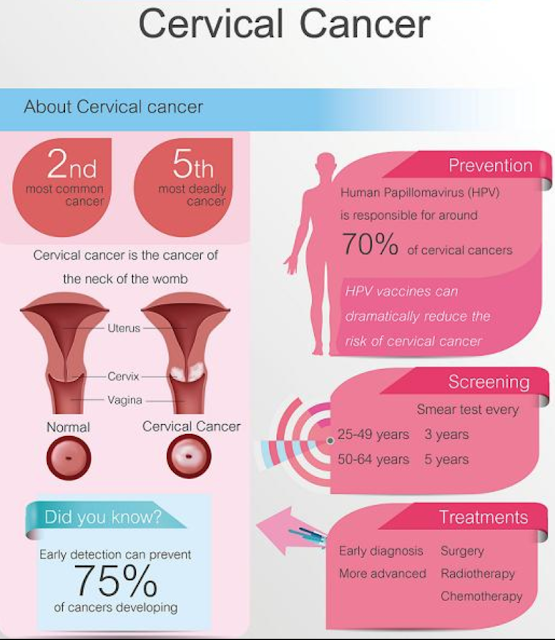 And I am glad that I have been seeing Marina Trofimovna for more than 5 years. I recommend her as a specialist, because she is a true professional in her field. In addition to the gynecological examination, she also performs an ultrasound on her own (which is very convenient). She is always very attentive and responsive, listens tactfully, prescribes competent treatment and will do everything possible, if only you were healthy. A doctor who inspires confidence is a rarity in our time. Therefore, if you still choose a specialist, feel free to make an appointment, you will not regret it.
And I am glad that I have been seeing Marina Trofimovna for more than 5 years. I recommend her as a specialist, because she is a true professional in her field. In addition to the gynecological examination, she also performs an ultrasound on her own (which is very convenient). She is always very attentive and responsive, listens tactfully, prescribes competent treatment and will do everything possible, if only you were healthy. A doctor who inspires confidence is a rarity in our time. Therefore, if you still choose a specialist, feel free to make an appointment, you will not regret it.
Mar 26 2021
Olga
I express my deep gratitude to Ekaterina Borisovna for her competent and professional approach to work, interested and sensitive attitude towards patients. I came to Ekaterina Borisovna on the recommendation, in a difficult situation – anemia of moderate severity, my hemoglobin was 70!! Ekaterina Borisovna was attentive to my problem, asked in detail about the prescription and symptoms of the disease, and prescribed an effective and prompt treatment – after 3 weeks, hemoglobin was already 120! My whole body condition improved – dry skin disappeared, hair stopped falling out, brittle nails decreased, a blush played on my cheeks !! But that’s not all, Ekaterina Borisovna was also able to correctly determine the cause of the disease, and recommended options for its treatment.:max_bytes(150000):strip_icc()/cervical-cancer-diagnosis-5b647ce246e0fb0025341fff.png) I have had multiple uterine fibroids for more than 10 years, which affects the cycle and causes heavy periods, and all gynecologists unanimously stated that in my situation the uterus needs to be removed – pre-menopausal age, complex nodes, etc. And here I want to note that Ekaterina Borisovna, with high professionalism, has a great desire to understand the patient’s problem and provide him with real help. Thanks to her caring attitude towards me, her advice and recommendations, I managed to avoid the removal of the uterus and implement a more gentle treatment option for uterine fibroids. Thank you so much, Ekaterina Borisovna, you are a doctor with a capital letter, as well as just a wonderful person and a charming woman!! Thanks for your hard work!!
I have had multiple uterine fibroids for more than 10 years, which affects the cycle and causes heavy periods, and all gynecologists unanimously stated that in my situation the uterus needs to be removed – pre-menopausal age, complex nodes, etc. And here I want to note that Ekaterina Borisovna, with high professionalism, has a great desire to understand the patient’s problem and provide him with real help. Thanks to her caring attitude towards me, her advice and recommendations, I managed to avoid the removal of the uterus and implement a more gentle treatment option for uterine fibroids. Thank you so much, Ekaterina Borisovna, you are a doctor with a capital letter, as well as just a wonderful person and a charming woman!! Thanks for your hard work!!
Jul 27 2021
Olga Arkhipova
I express my sincere gratitude to Marina Trofimovna Veldina! She led the Doctor’s entire pregnancy, until the conclusion of a contract with the maternity hospital. He is a great doctor and just a wonderful person! Each reception was a joy 🙂 In addition to the professional approach, Marina Trofimovna always knew how to calm her down in such an amazing and difficult period. With great pleasure I will recommend the doctor to all my friends and continue visiting after childbirth. I am grateful to fate for getting to her, it was the best decision! Thank you very much! 🙂
With great pleasure I will recommend the doctor to all my friends and continue visiting after childbirth. I am grateful to fate for getting to her, it was the best decision! Thank you very much! 🙂
Aug 19 2022
Marina
Ekaterina Borisovna, Professional with a capital letter. Very caring, knowledgeable and compassionate doctor. Her work and professionalism deserve only the highest praise.
Aug 6 2020
Anna
I have been seeing Marina Trofimovna for many years. Very knowledgeable doctor, no questions left unanswered. I will recommend to friends!
27 Apr. 2021
Olga
Excellent doctor, helped me deal with problems with the gastrointestinal tract without unnecessary additional tests, everything is clear and as needed. Now I’m recovering, but my health has improved significantly.
Mar 8 2022
Getmanova G.P.
She was treated by the therapist Ponomareva Larisa Vladimirovna for ARVI. The doctor is very attentive, responsible, qualified, and a very pleasant person. The treatment quickly got me back on my feet. I am glad that IMMA has specialists of this level. Thank you very much Larisa Vladimirovna.
The doctor is very attentive, responsible, qualified, and a very pleasant person. The treatment quickly got me back on my feet. I am glad that IMMA has specialists of this level. Thank you very much Larisa Vladimirovna.
Dec 28 2022
Lilia Geraskina
By a happy chance, I came to Ekaterina Borisovna, this is a doctor from God, attentive and delving into your illness. Thank you very much Ekaterina Borisovna, life has become much easier with you. I recommend this doctor to everyone.
Jan 22 2022
Natalia
I want to express my gratitude to Ekaterina Borisovna Simonova for her tact, professional approach and competent treatment!! Thanks a lot!!
Jan 29 2019
Anna
I am very serious in my choice of specialists. I prefer to choose a doctor based solely on my feelings and impressions. I want to express my deep gratitude to Evgenia Vladimirovna! A competent specialist who is sensitive and sympathetic to both the child and the feelings of the parents (in my opinion, this is worth a lot in our time). The prescribed treatment: clear and thoughtful, without unnecessary drugs and unnecessary manipulations. We are very lucky to have found such a doctor, thank you!
The prescribed treatment: clear and thoughtful, without unnecessary drugs and unnecessary manipulations. We are very lucky to have found such a doctor, thank you!
Oct 25 2022
Zabegaeva I.G.
I want to express my gratitude to the doctor Simonova Ekaterina Borisovna for her sensitivity, responsiveness to patients, as well as for competent treatment over the course of several years.
11 Apr. 2018
Olga
Thanks to Marina Trofimovna! very attentive doctor.
May 22, 2020
Irina Z.
I express my deep gratitude to Ekaterina Borisovna Simonova for her professionalism and mercy towards patients. I have been going to this doctor for several years for advice. All her conclusions and appointments are correct and confirmed by other doctors, for a consultation with which she very promptly not only sent me, but also helped to ensure that consultations and relevant examinations took place without delay. And this is very important in the appointment of competent treatment. Ekaterina Borisovna – Doctor and Man with a capital letter. I’m glad I’m in good hands. Thank you from the bottom of my heart, Ekaterina Borisovna! I wish you and your loved ones good health. I advise everyone to contact such a competent, experienced and humane therapist. Best regards, Irina Z.
And this is very important in the appointment of competent treatment. Ekaterina Borisovna – Doctor and Man with a capital letter. I’m glad I’m in good hands. Thank you from the bottom of my heart, Ekaterina Borisovna! I wish you and your loved ones good health. I advise everyone to contact such a competent, experienced and humane therapist. Best regards, Irina Z.
Mar 18 2021
Parmouth G.
Thank you for having such doctors! Ekaterina Borisovna is a very attentive doctor, quickly responds to the situation, keeps everything under control. It’s nice to feel that you are taken care of, in our time it is a rarity.
Jan 20 2020
What do the smears mean? Encyclopedia of the IVF Clinic
Any visit by a woman to a gynecologist is always accompanied by taking swabs. What do they mean? The doctor obstetrician-gynecologist of the Department of Obstetrics and Gynecology of the Medical Academy of Postgraduate Education of St. Petersburg Marina Vladislavovna BONDARENKO tells.
Petersburg Marina Vladislavovna BONDARENKO tells.
Any visit by a woman to a gynecologist is always accompanied by a swab. What do they mean? The doctor obstetrician-gynecologist of the Department of Obstetrics and Gynecology of the Medical Academy of Postgraduate Education of St. Petersburg Marina Vladislavovna Bondarenko tells.
Flora smear
Flora smear is the most common test in gynecological practice. It is taken both at the first visit to the doctor and at subsequent visits. If a woman is healthy, then such a prophylactic smear is done with a frequency of about once every 3 months. In cases where it is necessary to confirm a particular disease or test the effectiveness of treatment, it makes sense to examine it at every visit to the doctor.
Before the procedure, you should not go to the toilet “in a small way” for 2-3 hours. Otherwise, you may wash away bacteria and epithelium, which are important for a correct diagnosis. For a day, you must refrain from intimate contacts. Also, do not use spermicidal creams or douche.
Also, do not use spermicidal creams or douche.
A prophylactic flora swab is taken from a healthy woman approximately once every three months. When performed correctly, a smear on the flora can say a lot. First of all, determine the number of leukocytes. If there are a lot of white blood cells, then you may have inflammation. The type of microflora is also determined in this smear. It is directly related to the phase of the menstrual cycle. In the analysis, there may be different cells of the rod or cocci. If there is inflammation, then there will always be a lot of cells, since they are rejected faster. “Cluster cells” characteristic of sexually transmitted diseases (STDs) may appear. This also suggests that it is time to take care of your health. When gonococci or Trichomonas appear in the analyzes, then you definitely should not put off a visit to the doctor. Although it should be noted that only those gonococci that “sit” inside the cell are dangerous. But extracellular ones can be present in a smear in an absolutely healthy woman.
You also need to remember that the diagnosis of gonorrhea can only be made after inoculation on special media. So I’ll have to take another smear. Before this, treatment cannot be started.
If filaments of mycelium are found in your flora smear, then this is a characteristic sign of candidiasis, in other words, “thrush”. However, for the final statement of that diagnosis, it is also not possible to do without sowing.
“Sterility” swab
At the gynecologist’s appointment, you can take a swab to check the degree of purity and hormonal levels. It determines the composition of the contents of the vagina, which is normally represented by a secret, various epithelial cells and coccal microflora. In order to properly conduct the study, you need to use a sterile Tampax-type swab, which is removed after 8 hours. It is most convenient to introduce it at night and remove it in the morning at a gynecologist’s appointment. The swab is sent to the laboratory in a sterile tube.
The degree of purity as a result of a smear is expressed in numbers:
1 and 2 are indicators of health, and 3 and 4 indicate the presence of colpitis – inflammation of the vagina.
There is also a smear for hormonal levels. It shows how during the menstrual cycle the female body is affected by sex hormones – estrogens and progesterone. According to its results, it is possible to establish how correctly and in what quantity they are produced.
A variant of this smear is the Threat swab. It is used during pregnancy to determine the risk of termination.
Pap smear or Pap test
Papanicolaou test or Pap test is needed to detect abnormalities in the cells of the cervix. In our country, it is also called a smear for atypical cells or cytology. All these are “names” of one analysis.
A Pap smear should not be done during menstruation or if there is inflammation, as the result may be false. During the day, as well as when taking a smear for flora, you should avoid intimacy, do not use candles or tampons.
In a cytological smear, the size, shape, number and location of cells are evaluated. In young girls, according to this analysis, it is possible to assess the correct production of estrogens. A smear is considered normal or negative when all cells are of normal size and shape and there are no abnormal cells. Atypical cells are “wrong” cells. They have the wrong shape, size, and they are often not located as they should.
In the first half of the cycle, the cells are located separately, in the second half, the cells seem to “bunch”. Therefore, such a smear is sometimes called “dirty”. To describe an abnormal smear, cytologists use special terms: dysplasia of 1, 2, 3 degrees, atypia. With grade 1 dysplasia, it is necessary to repeat the study after 3-6 months. Such a result can be with untreated chlamydia, gonorrhea or trichomoniasis. Therefore, it is necessary to repeat the procedure after a course of treatment.
In the case when dysplasia was found in the previous smear, or the woman or her partner suffered from herpes or genital warts, an additional examination should be done – colposcopy.
If grade 2 or 3 dysplasia is detected, then a biopsy is indispensable in this case. At the same time, a small piece of tissue is taken from the changed area. If atypical cells are detected, consultation with an oncologist is necessary.
An abnormal smear does not always mean that a woman has cervical cancer. In inflammation, cells can also look abnormal. But after treatment, the smear usually becomes normal.
According to the latest recommendations of the American Cancer Society, which Russian gynecologists also adhere to, a Pap test should be performed for all women from 20 years old once a year. If the result is negative twice, then the analysis can be repeated at least once every 3 years, up to 65 years. Women with a large number of sexual partners, infertility, menstrual irregularities, and genital herpes need more frequent examinations. As well as ladies taking hormonal contraceptives and obese.
The same category includes those who have ever found the papilloma virus.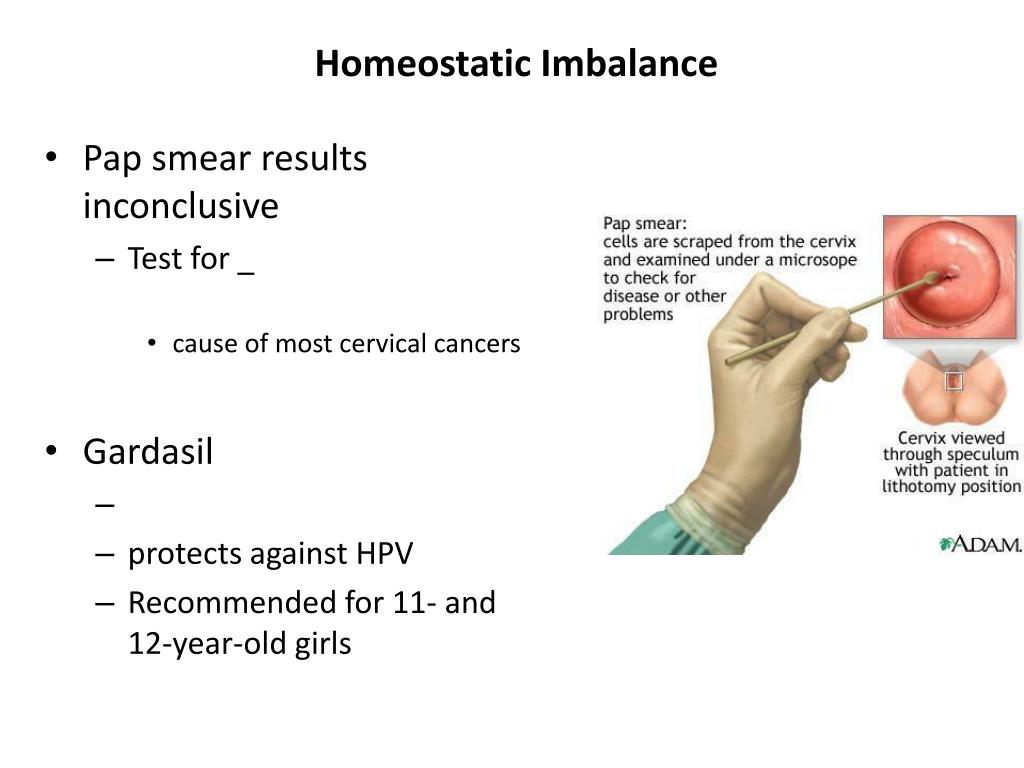 It is his role that is currently considered the main one in the development of cervical cancer. Remember also that if you decide to use an intrauterine device, then before setting it up, you must also take a swab for atypical cells.
It is his role that is currently considered the main one in the development of cervical cancer. Remember also that if you decide to use an intrauterine device, then before setting it up, you must also take a swab for atypical cells.
Latent Infection Swab
These swabs are used to detect infections that are not detected by flora testing. These include chlamydia, ureaplasmosis, mycoplasmosis, genital herpes, appillomavirus and cytomegalovirus infections. In addition, this research method helps in the detection of candidiasis.
There are a fairly large number of different methods for diagnosing such infections. The most reliable is the PCR method – polymerase chain reaction, in which the infection is determined by its DNA.
PCR diagnostics are very informative, but in some cases there is a possibility of false results. Then it makes sense to supplement the examination with crops on special nutrient media. In order to minimize false results, it is better to have your own permanent gynecologist and be examined in the same laboratory.

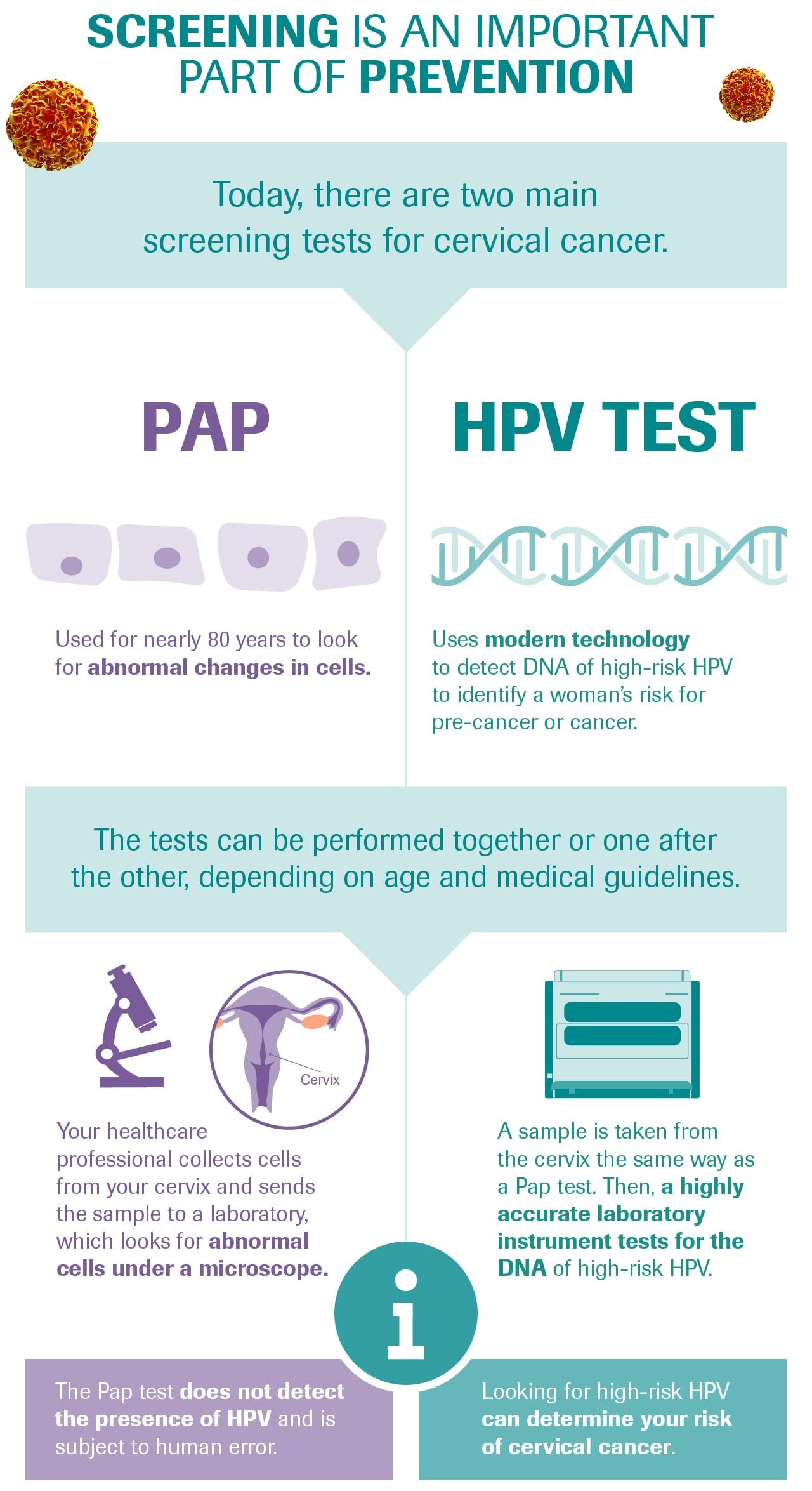 This is called primary HPV testing. If your result is normal, your doctor may tell you that you can wait five years until your next screening test.
This is called primary HPV testing. If your result is normal, your doctor may tell you that you can wait five years until your next screening test.